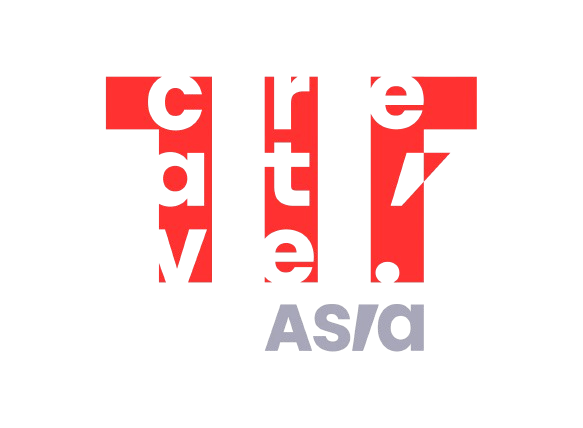How does Web Design relate to Digital Marketing?
A website design is an integral part of digital marketing. A website is necessary for digital marketing to drive traffic and motivate users to take action. Poor website design leads to slow loading times, poor navigation, and high bounce rates. Following the latest trends in web design can help achieve marketing goals more effectively.
What is the role of web design in digital marketing?
In the world of digital marketing, there are several strategies that marketers can use to achieve their goals, such as Pay-Per-Click, Social Media Marketing, Content Marketing, and Search Engine Optimization (SEO). However, none of these strategies can function effectively without a well-designed website.
Website design is considered the foundation of digital marketing due to several reasons.
- It enhances SEO functionality.
- a well-designed website enhances the functionality of SEO. The primary aim of SEO is to increase the visibility of a website on search engines. A well-designed website makes it easier for search engines to locate and rank it. It also ensures that the website is responsive, crawl-friendly, and user-friendly, which are essential factors that entice visitors to stay on the website longer.
- It encourages viewers to have trust in you.
- If a website is poorly designed, customers may assume that the business is unreliable and not trustworthy. However, a website that is constantly updated and well-designed can keep users interested and encourage them to stay on the website longer. This, in turn, gives your business legitimacy and can attract more customers.
- It makes a favorable initial impression.
The majority of consumers evaluate a brand based on the quality of its website. If they are dissatisfied with the website, they are likely to visit a competitor’s website. An attractive website can create a positive first impression, sustain their interest in your company, and motivate them to purchase your products or services right away.
How digital marketing is supported by website design?
Website design and digital marketing are two critical aspects of online business that are closely intertwined. A well-designed website can significantly help your digital marketing strategy by enhancing user experience, reinforcing your brand image, and boosting your online visibility. Since your website is often the first point of contact with your potential clients, it is crucial to ensure that it conveys your marketing message effectively while being aesthetically pleasing and user-friendly.
When it comes to website design, there are a few key aspects to keep in mind.
- Branding
People often judge your business by its website since it is how they identify with you as a brand. It’s crucial to make sure that your website’s appearance complements your brand as a consequence. Web design is a crucial component of online branding. If your website is well-designed, it can get you brownie points. Furthermore, a lot of people who visit your website tend to stay for a while. Therefore, make sure that every piece of information on your website is true and authentic. False or incomplete information might convey the impression that your company is untrustworthy. Editors can use review and approval processes to ensure that all content consistently adheres to your branding approach.
- Website Speed
The loading time of a well-designed website is three to four seconds. A slow-loading website is indicative of a bad user experience. A website’s coding, installed themes and web plugins, quantity of photos and videos, and other elements can all have an impact on the speed of your site.
Here are a few strategies to increase the speed of your website:
- Eliminating unnecessary plugins
- Minification of HTML, JavaScript, and CSS
- Enabled browser caching
- Putting webpages in the cache
- Reducing how often you reroute
- Reducing the size of your images
- Choosing a superior hosting solution that optimizes performance
- Friendly UX Design
- A positive user experience on a website is essential. Simplify navigation, adhere to best practices in design, optimize mobile devices, and build trust with higher-quality content.
- Readability of Content
- Content readability is the degree to which a visitor can easily understand the information on your website. It is an essential component of content marketing. Readability contributes to the content’s increased excitement and interest. As a result, the SERP ranks of your website get better. Numerous elements, such as sentence length, typeface selection, paragraph breaks, color schemes, passive voice usage, and word choice, all affect readability.
- Search Engine Optimization (SEO)
When building a website, you have to strike a balance between user-friendliness and search engine optimization. When search engine optimization is included in the website design strategy, search engine optimization is improved on your website. Stated differently, it will come up when customers look for your products and services. An advantage of SEO web design is:
- Attain a higher position in search engines
- A great deal of organic traffic
- Optimizes the yield on your marketing expenditure
- Essential Web Information
In order to develop a successful website, you need to understand core web vitals. Three metrics make up these:
- Lengthiest contentful paint (LCP): gauges the speed at which pages load
- The first input delay (FID) calculates how long it takes to interact with a website
- Cumulative layout shift (CLS): gauges consistency in appearance
Google has strict standards for high performance in every statistic. Using Google PageSpeed Insights, you can assess the performance of your website and make necessary improvements by updating your web host, optimizing page components, and allocating space for ad elements.
- Analytics and Observation
Usually, this has to do with revamping websites. Google Analytics monitors and reports on the functionality of your website, highlighting areas that want improvement. If you monitor these analytics, you may adjust your website’s content and design to better meet the needs of your target audience.
- Adaptability
The responsiveness of a website is determined by how well it functions on screens of various sizes.
It focuses on how well the website works on various devices, such as computers, tablets, smartphones, and so on. Its goal is to provide your website with a responsive design that functions on all kinds of devices. Responsive design is essential to digital marketing and web development.
- It supports SEO.
- The user experience is enhanced.
- By removing the need to build a new website, it lowers costs.
- Making simple and quick edits to your website is beneficial.
- Conversion Rate Optimization (CRO)
Conversion rates are a good way to gauge the performance of a website. Take into account these elements to boost conversion rates: concise messaging, simple navigation, accessibility, and a compelling call-to-action (CTA).
Utilize online marketing tools to personalize your message according to visitor information, such as device and surfing history. Include accessibility elements like picture alt texts and meta titles to make it easier for visitors to explore your website. Lastly, convince visitors with a compelling CTA that uses precise phrases and action words.
- Competition
When designing your website, keep your competitors in mind as well. This covers the methods used to develop their websites, the latest features they are providing, the frequency of site updates, etc. If you are able to outperform them, you win. Thus, do not try to copy their style. Keeping it unique is the best option. If you are in search of a reliable and credible web design company to develop a website that will make you stand out in the market, then companies like TIF Creative can help you.
Supporting campaigns for omnichannel marketing
Most businesses now employ omnichannel marketing to reach customers wherever they are. One may utilize billboards, emails, texts, podcasts, banners trailing a low-flying aircraft, and more. Every channel must deliver a consistent message in a way that adheres to the format.
Omnichannel tactics heavily influenced by social media marketing intentionally adapt their content for every network. For example, posting more text-heavy content on Facebook and LinkedIn, and more video content on Instagram and TikTok.
The website backs these advertisements, ensuring that consumers enjoy a seamless and engaging experience that encourages them to go forward in the buyer’s journey. Site design must keep customers on the page by offering a convincing, captivating, and frustration-free user experience—after all, it’s often the final stop before the big buy.
Getting the Most Out of SEO
Optimizing your website for search engines, or SEO, is one of the best ways to get your products and services in front of potential customers. Prior to performing any additional SEO, undertake keyword research to determine the terms and phrases your target audience uses to search for products, services, or information related to your website. By using keyword research tools like Google Keyword Planner, analyzing competitor websites, and analyzing search engine results pages (SERPs), you may identify keywords that provide information to search engines about the subject matter of your website.
A well-developed website has the potential to significantly increase organic traffic and support your digital marketing initiatives.
UX design: what is it? How can one get better?
UX design is the process of developing goods or services that deliver users relevant and meaningful experiences.
It encompasses elements like usability, design, branding, and function. Making goods or services simple, efficient, and fun to use is the goal of UX design.
Here are some pointers to help you become a better UX designer:
- Avoid creating new ones. Take advantage of recognizable and accustomed patterns and user interfaces.
- Don’t complicate things and use responsive design. Stay away from overcrowding your design with components or eye-catching fonts.
- Understand your target users and their needs. Create personas, user flows, and prototypes to test your design assumptions.
- Learn the tools of trade. Familiarize yourself with the software and platforms that UX designers use, such as Sketch, Figma, Adobe XD, etc.
The effectiveness of your digital marketing initiatives can be significantly impacted by a website’s design. In order to maximize the impact of your digital marketing efforts and eventually achieve greater online success, it is imperative that you combine all of the fundamental components of a well-designed website while building your online presence.




